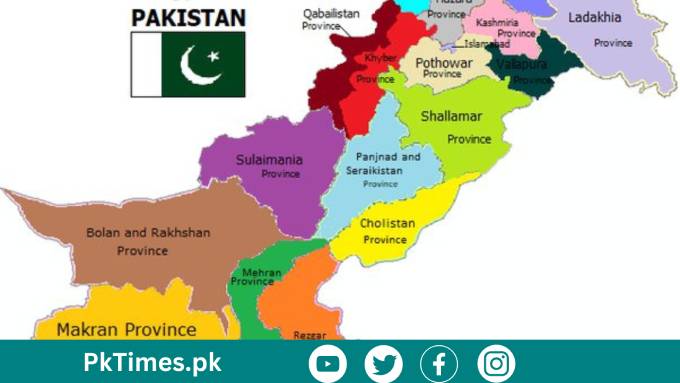Understanding the States and Provinces: Pakistan’s administrative structure is a mosaic of states, provinces, and special administrative areas, each with its own unique identity and governance framework. Grasping the intricacies of these divisions is crucial for understanding the socio-political landscape of the country. In this comprehensive guide, we will delve into Pakistan’s administrative divisions, shedding light on its provinces, special areas, and the significance of terminology clarification.
Clarifying Terminology: States vs. Provinces:
Before delving into the specifics, it’s essential to clarify the terminology. In Pakistan, the administrative regions are often referred to as provinces, which are the primary administrative units of the country. These provinces include Punjab, Sindh, Khyber Pakhtunkhwa (KP), and Balochistan. Additionally, there’s the Islamabad Capital Territory (ICT), serving as the federal capital. Understanding these distinctions is fundamental to navigating Pakistan’s administrative framework effectively.
Pakistan’s Administrative Divisions:
- Punjab: Nestled in the heart of Pakistan, Punjab is the most populous and economically vibrant province. Its capital city, Lahore, is renowned for its rich history, culture, and cuisine.
- Sindh: Stretching along the Arabian Sea, Sindh is a melting pot of cultures and traditions. Karachi, its capital, is not only Pakistan’s largest city but also serves as its economic and commercial hub.
- Khyber Pakhtunkhwa (KP): Nestled in the northwest, KP is known for its breathtaking mountainous landscapes and vibrant Pashtun culture. Peshawar, the provincial capital, has a rich historical heritage.
- Balochistan: Pakistan’s largest province by area, Balochistan is characterized by its rugged terrain and nomadic tribes. Quetta, its capital, serves as a gateway to Central Asia and the Middle East.
Special Administrative Areas:
Beyond the provinces, Pakistan also comprises two special administrative areas:
- Azad Jammu and Kashmir (AJK): Situated in the northern region, AJK is known for its lush green valleys and scenic beauty. It enjoys a degree of autonomy under Pakistan’s constitution.
- Gilgit-Baltistan (GB): Located in the northernmost region, GB is renowned for its majestic mountains and serene landscapes. While officially part of Pakistan, it also holds a semi-autonomous status.
Conclusion:
Understanding Pakistan’s administrative divisions is crucial for navigating its socio-political landscape effectively. From the provinces to the special administrative areas, each component contributes to the diverse tapestry of Pakistan’s governance structure. By delving into these administrative intricacies, we gain valuable insights into the multifaceted nature of Pakistan’s governance and its rich cultural heritage.
Read more: how many dams in Pakistan
FAQ’s
1. How many states are there in Pakistan?
Pakistan does not have states; instead, it is divided into provinces, special administrative areas, and a federal capital territory. There are four provinces: Punjab, Sindh, Khyber Pakhtunkhwa (KP), and Balochistan. Additionally, there are two special administrative areas: Azad Jammu and Kashmir (AJK) and Gilgit-Baltistan (GB).
2. What is the difference between provinces and special administrative areas in Pakistan?
Provinces are the primary administrative units of Pakistan, each with its own provincial government and legislative assembly. They include Punjab, Sindh, KP, and Balochistan. Special administrative areas, such as Azad Jammu and Kashmir (AJK) and Gilgit-Baltistan (GB), have a degree of autonomy but are not considered provinces. They have their own legislative assemblies and governments, but their status is subject to Pakistan’s constitutional framework.
3. How is governance structured in Pakistan’s administrative divisions?
In Pakistan’s provinces, governance is structured around provincial governments headed by a Chief Minister and provincial assemblies. Each province has its own administrative structure responsible for various functions such as education, healthcare, and infrastructure development. Special administrative areas like AJK and GB also have their own legislative assemblies and governments, but they operate within the framework of Pakistan’s constitution and federal laws.


